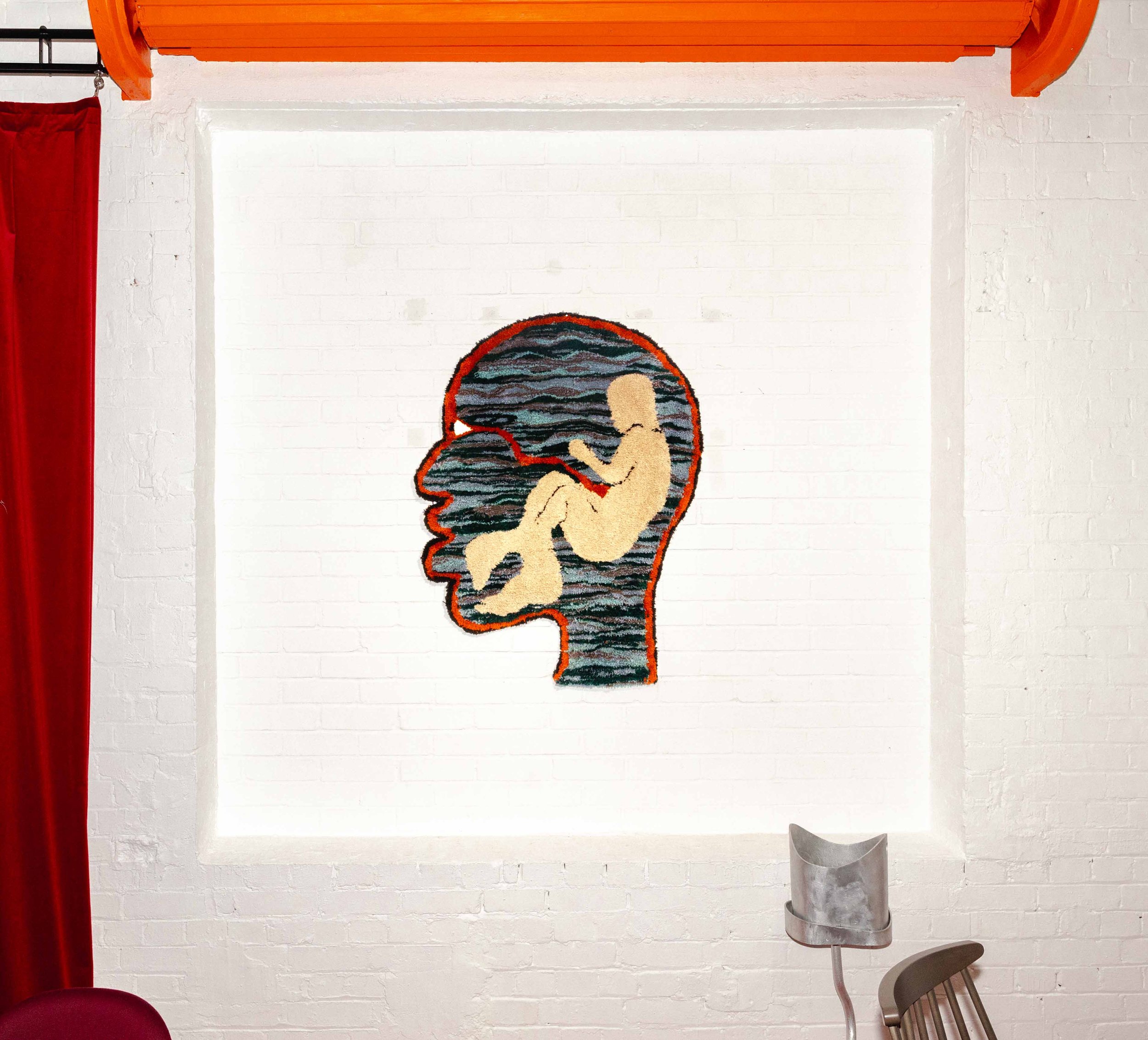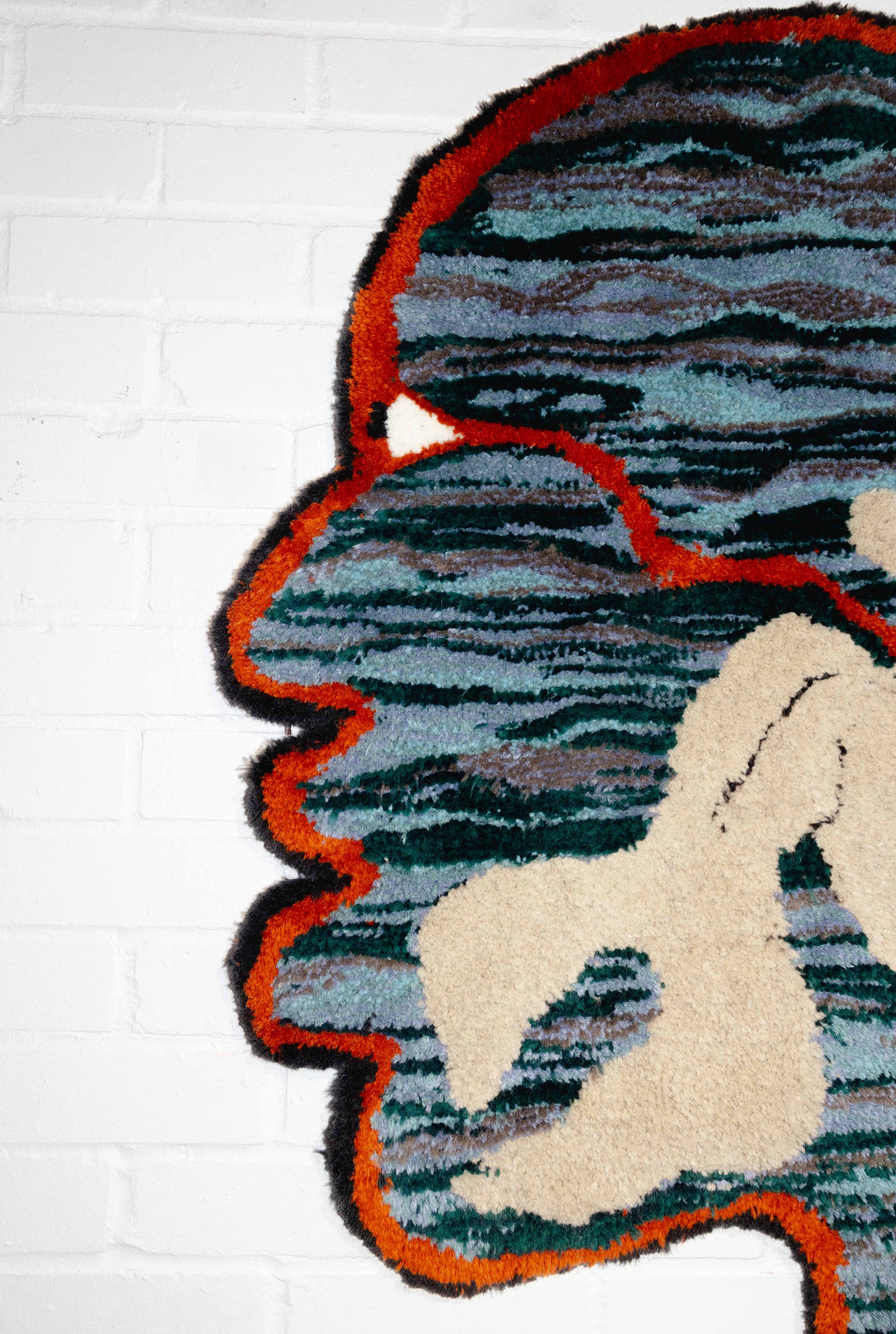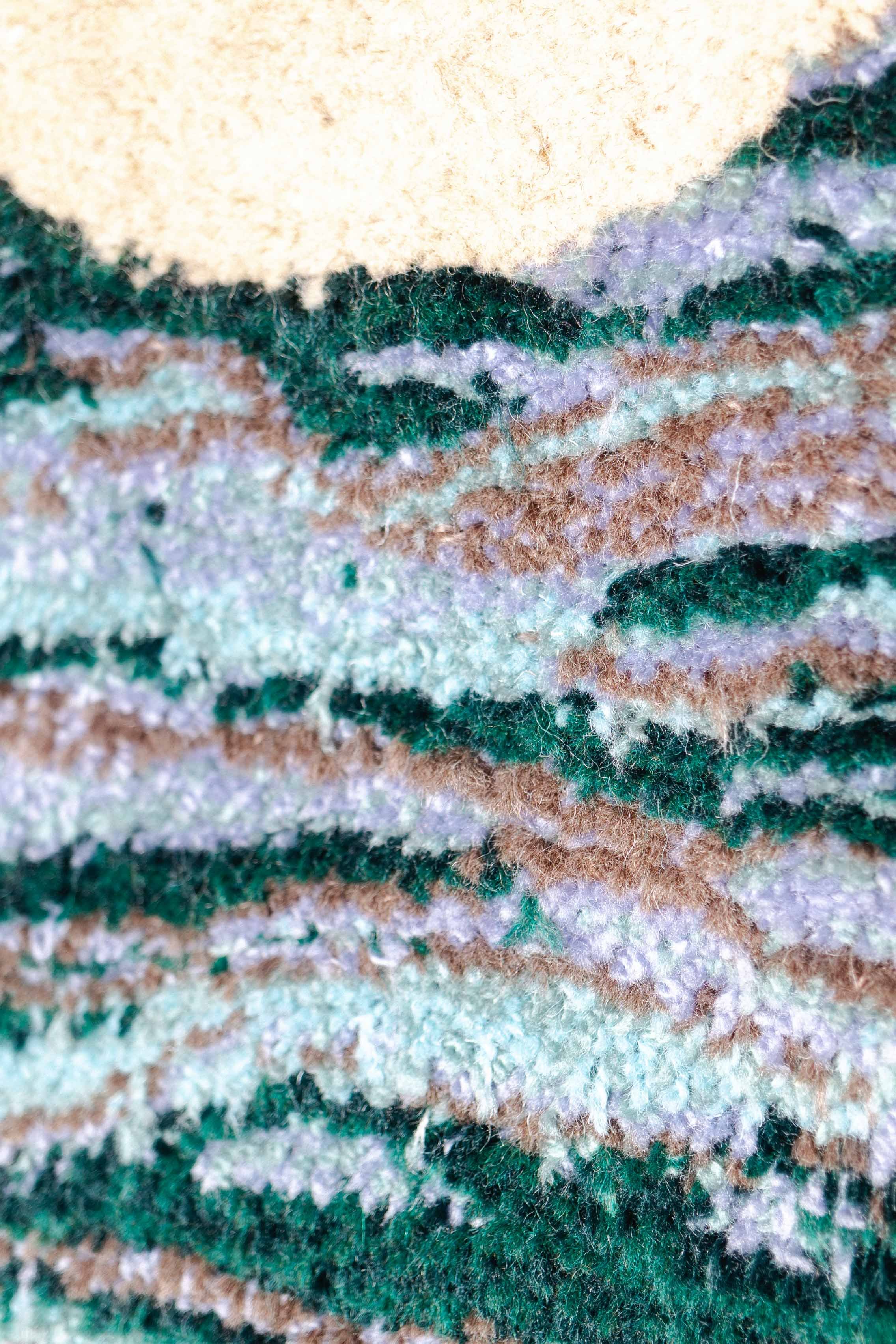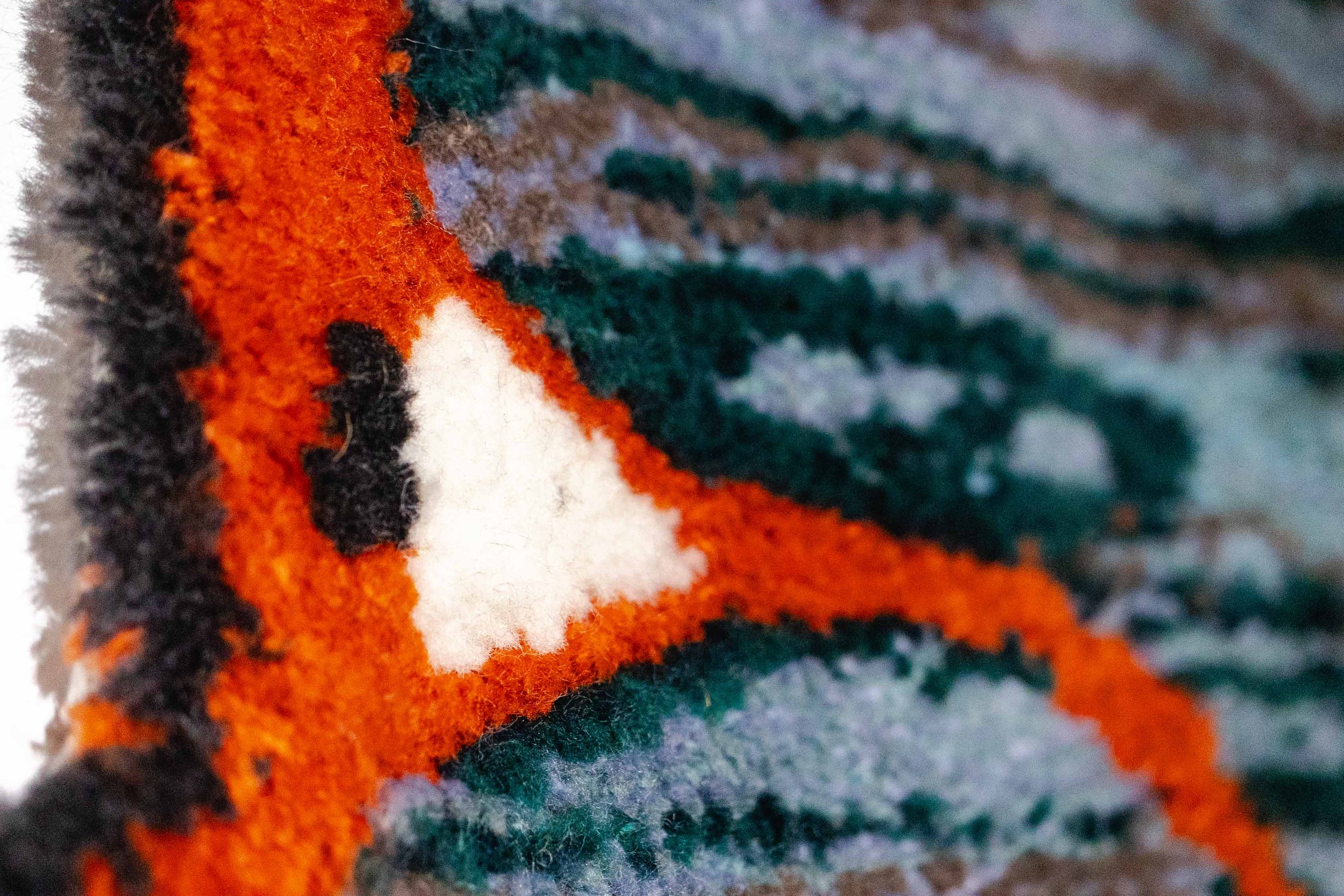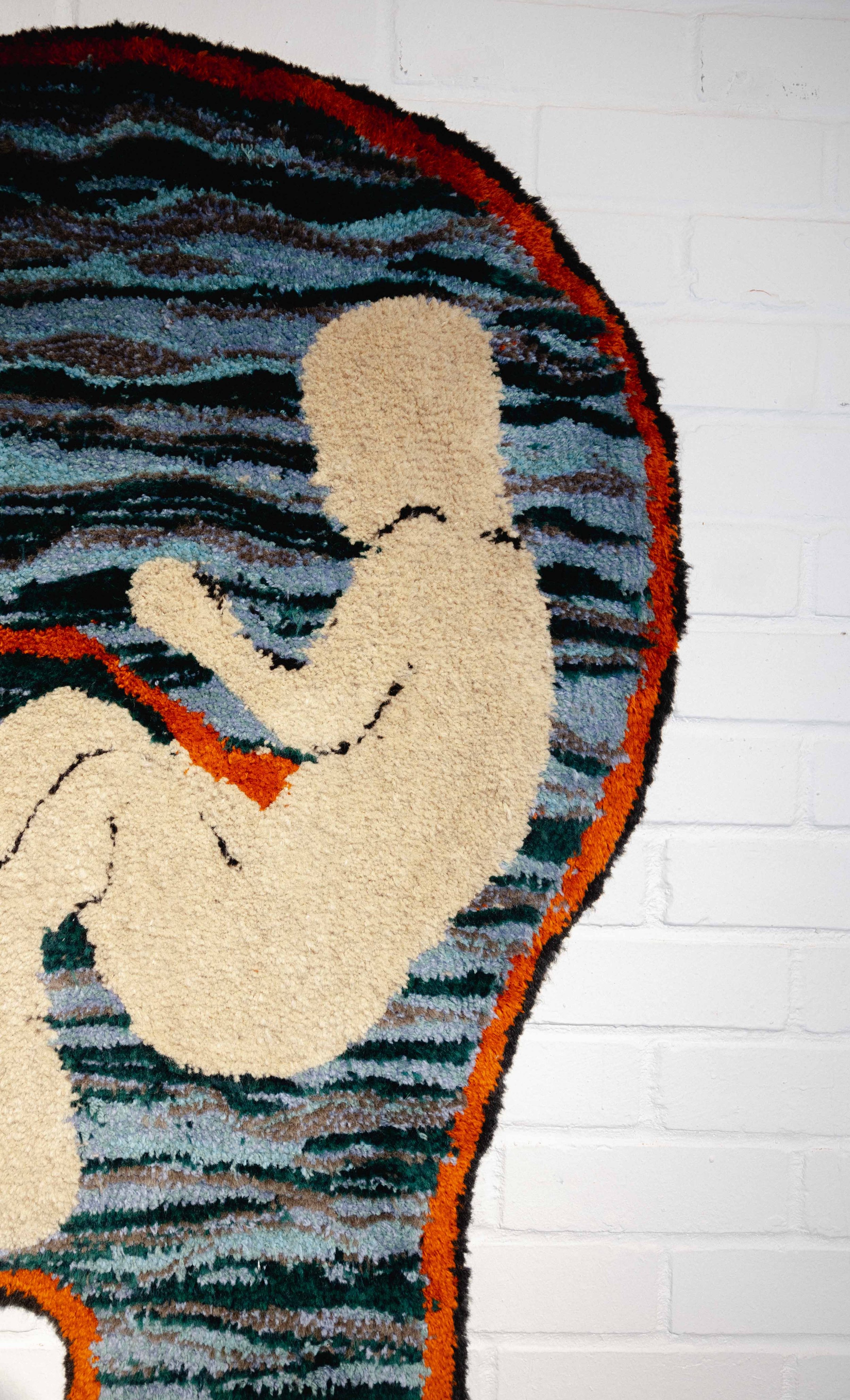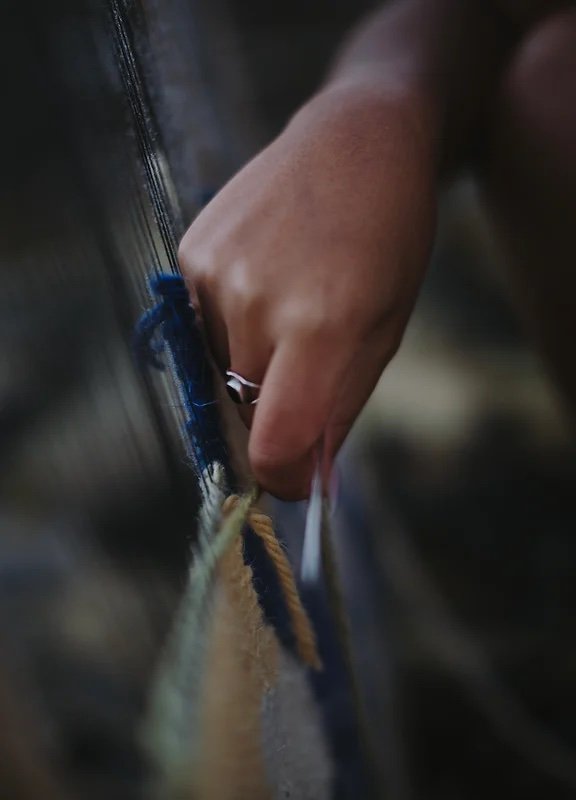Zethu Maseko — Where There Is Love and Water, Life Will Live
Zethu Maseko is one of several emerging artists taking the spotlight as the Autumn season starts at Shoreditch Arts Club. Where There Is Love and Water, Life Will Live, 2023 by Zethu Maseko is a tapestry exploring the relationship between mind, body, creativity, water, and justice, installed facing Hew Locke’s monumental Black Queen, from 2004.
Where There Is Love and Water, Life Will Live, 2023 by Zethu Maseko, photographed by Edward Howell
In her artwork Zethu Maseko utilises various mediums, including performance, film, costume, tapestry, sound, and workshops. The themes that emerge from Zethu's works are varied, encompassing mythology, memory, geography, belonging, ancestry, spirituality and practices of repair.
Through the following interview we discover more about her influences that include afrofuturism, ecofeminism and hydrofeminism, as well as how the tapestry relates to music in her practice, and the symbolism present in the artwork we are honoured to host.
Zethu Maseko photographed by Hannah Beth
Can you tell us why you began working with tapestry?
In 2019, I began experimenting with tapestry, drawing inspiration from mythology and the use of fabric to archive history and express identity, culture, social norms, and dynamics.
The process of creating a tapestry fascinated me, especially the time and labour invested using various techniques, and the performative aspect of the craft. Each tapestry holds hours of effort and dedication, offering insights into the people and the moment they represent. Weaving connects the artist's essence with the work. In a world where technology often replaces manual tasks, I found it intriguing to embody the laborious process of tapestry creation, which requires extended periods of focused attention.
Photographed by Hannah Beth
Water is a recurrent theme for you, could you share what led you to begin exploring this relationship between water, humanity and the land?
In 2017 I came across the book 'The Hidden Messages In Water' by photographer Masaru Emoto, which depicts how water molecules change their structure in response to changes in their environment. This led me to be fascinated by the idea that water can hold memory, and as humans, who are mostly made up of water, we may carry a history as ancient as time within us, flowing through our bodies. I became intrigued by the potential stories witnessed by water and how lost and misrepresented histories could be reimagined and reclaimed. This led me into my interest in Christine M. DeLucia’s concept: ‘Wake Work’. The term "wake" refers to both a vigil for the dead and the ripples left behind by a boat's passage on water. "Wake Work" is a framework that addresses the interplay between Indigenous history, land, and bodies in the context of the transatlantic slave trade, colonial violence and dispossession. It seeks to uncover, understand, and acknowledge the hidden histories, suppressed memories, and ongoing legacies of colonialism in order to foster healing, justice, and Indigenous sovereignty.
You also create music, does your art and musical practices have crossover?
Drexciya was a pioneering electronic music project from Detroit in the 1990s. The duo, James Stinson and Gerald Donald, created a mythical narrative about an underwater civilization called Drexciya, born from African women thrown overboard during the transatlantic slave trade. Their music blended techno and electro genres and was known for its hypnotic rhythms and otherworldly atmosphere. Drexciya's Afrofuturistic approach challenged historical accounts and left a lasting impact on electronic music.
I became interested in the Drexciya movement and started producing soundscapes to complement my tapestries. I incorporated nature samples and sea shanty-like songs to explore the voice of the sea and the historical narratives it carries.
Photography by Hannah Beth
Such a cool reference! Are there other notable influences?
This journey of discovery with Drexciya also sparked my interest in ecofeminism and hydrofeminism, which explore the parallels between the policing, reproductive rights, and violence on women's bodies and our dysfunctional relationship with the earth. Ecofeminism and hydrofeminism are two interconnected feminist perspectives that focus on the relationship between gender and the environment, particularly concerning issues of ecological sustainability, social justice, and the exploitation of nature and women.
I then became interested in the work of Robin Wall Kimmerer, the author of the book "Braiding Sweetgrass: Indigenous Wisdom, Scientific Knowledge, and the Teachings of Plants." The book weaves together scientific inquiry, personal experiences, and indigenous teachings to explore the relationship between humans and the natural world. It advocates for a deeper connection to nature and a more reciprocal relationship with the land, encouraging readers to view the natural world with gratitude and responsibility.
I delved into how processes like globalisation, industrialisation, and colonialism have disconnected us from the planet and the practices that once bound us to it, resulting in a disconnection from ourselves and our communities.
To address these concerns, I focused on practices of repair, such as weaving, natural dyeing, and using specific organic materials and processes. My sound works, surreal landscape tapestries and workshops are a platform to discuss and re-introduce these practices and conversations to others.
Where There Is Love and Water, Life Will Live, 2023 by Zethu Maseko, photographed by Edward Howell
The work hanging in the club, Where There Is Love and Water, Life Will Live (2023), depicts the brain as a womb, the site of creation in more than one sense, what does this symbolise for you?
This tufted tapestry explores the parallels between amniotic fluid and the ocean. Both represent bodies of water that serve as sources of life, facilitate the exchange of nutrients, and play a vital role in protecting and sustaining life. In the context of the world's current turbulent state, the depicted figure envisions an escape route—a return to the sea.
Throughout history, mythology has provided a means for humans to express their desire for alternative realities or a means of escape. The figure in the artwork symbolically nourishes the growing foetus, unconsciously transferring everything she sees and experiences onto the child.
The phrase "Where There Is Love and Water, Life Will Live" conveys the idea that love and water are essential for the sustenance and flourishing of life. It suggests that where these elements exist, there is the potential for growth, vitality, and the continuation of life. Love represents emotional and relational connections, while water symbolises the physical element necessary for survival. Together, they represent fundamental components that support and nourish life in various aspects, both on a personal and universal level.
Zethu Maseko (1998, UK) graduated from Goldsmiths Fine Art in 2020. Exhibitions include BACKLIT, Nottingham, 2021 and Bloomberg New Contemporaries at South London Gallery in 2020. Maseko has been recognised with multiple accolades including the Young Achiever Future Leader Award from the Universal Peace Federation at the UK Parliament in 2019, the Tuwezeshe Akina Dada Fellowship Grant in 2018 and the Peter Stanley Prize in 2017. In 2023 she hosted a workshop on weaving at Chisenhale Gallery.
Zethu Maseko will give an artist talk at the club on the 26th September.


